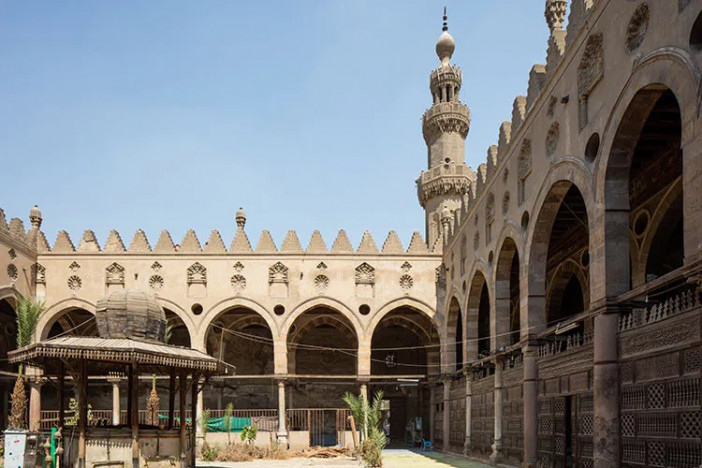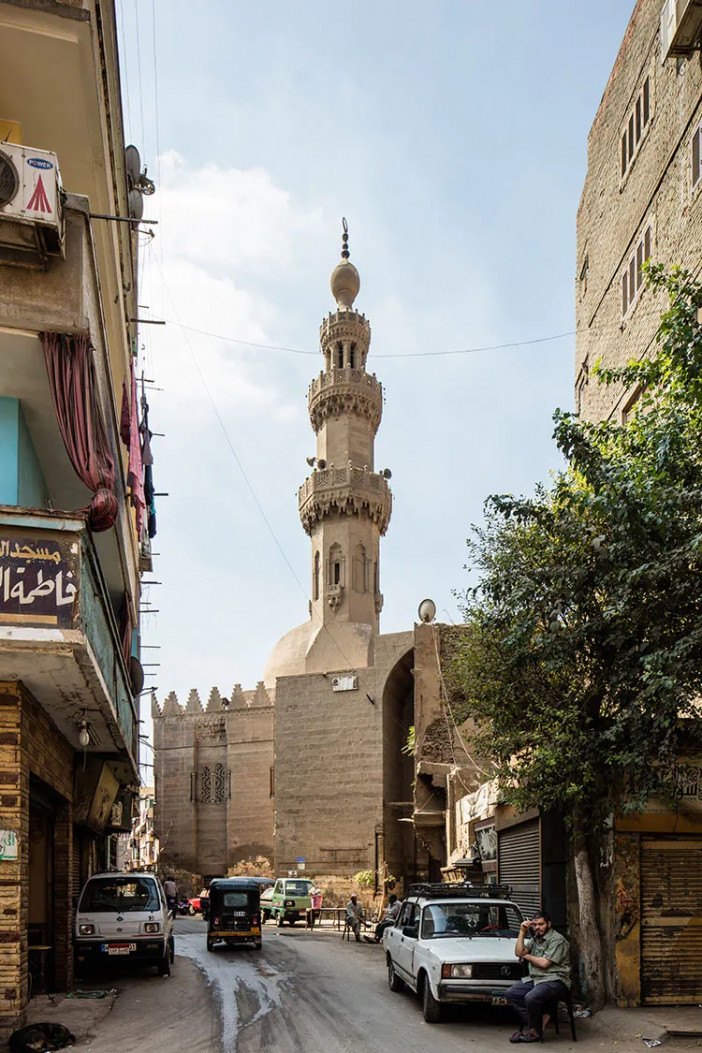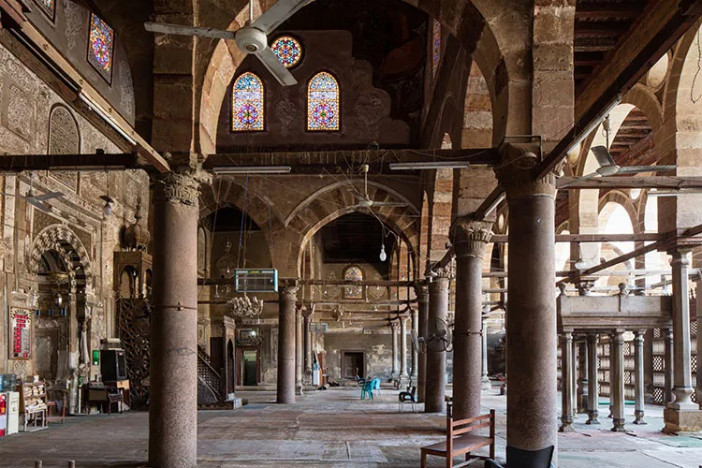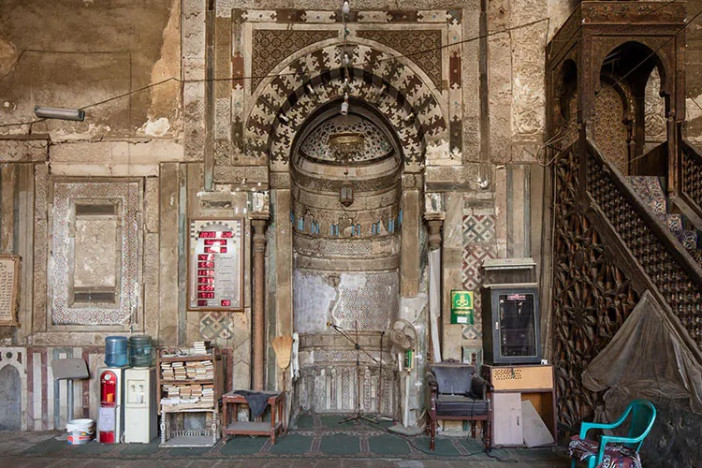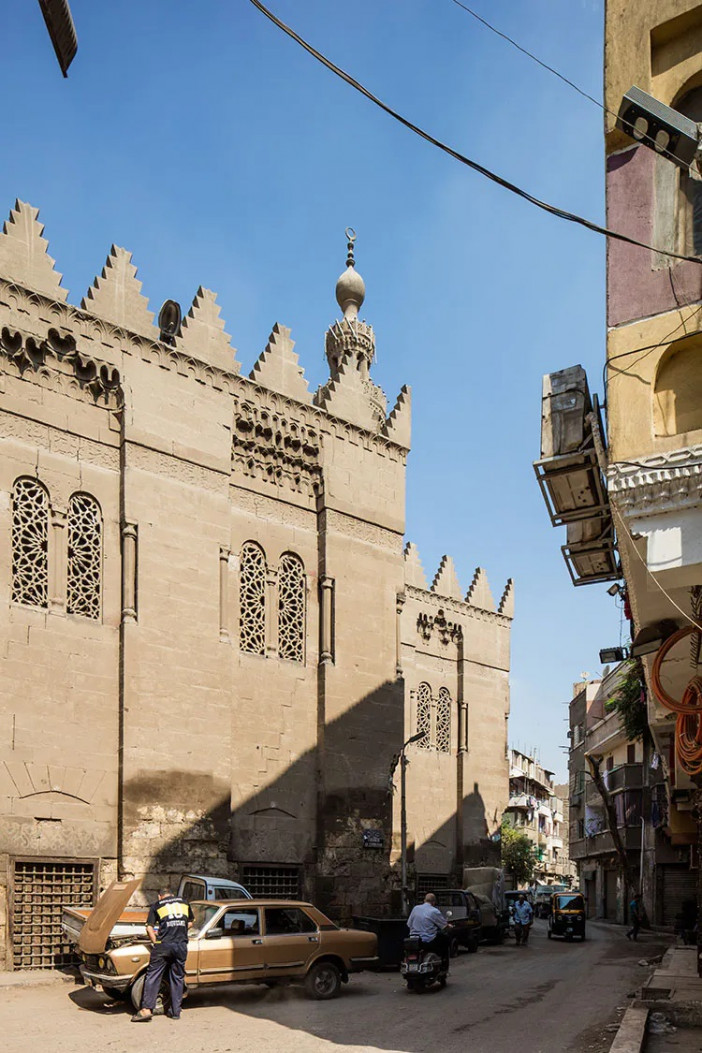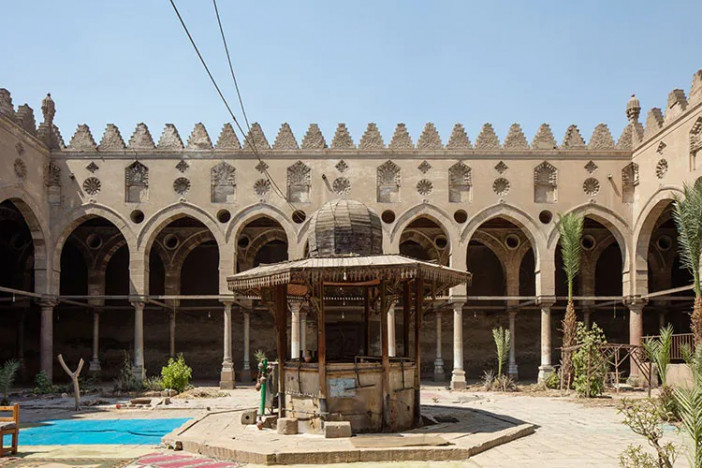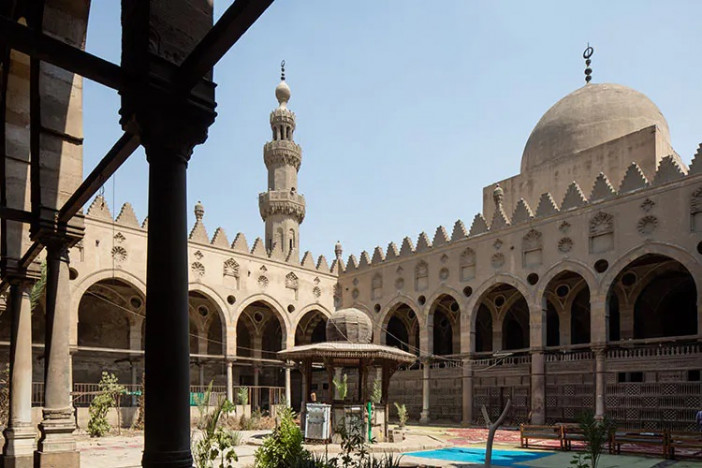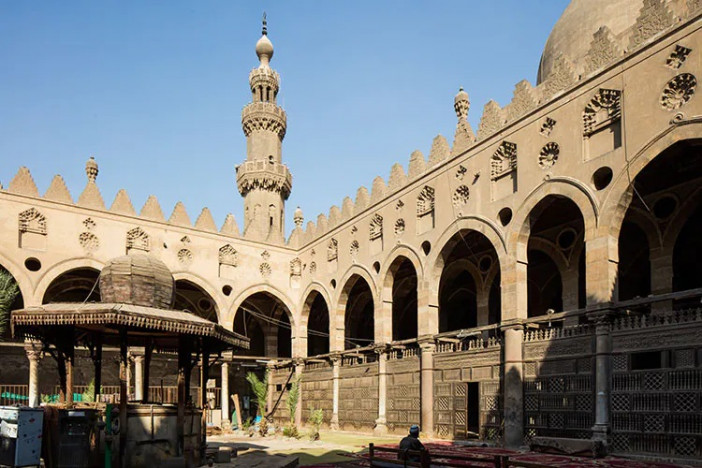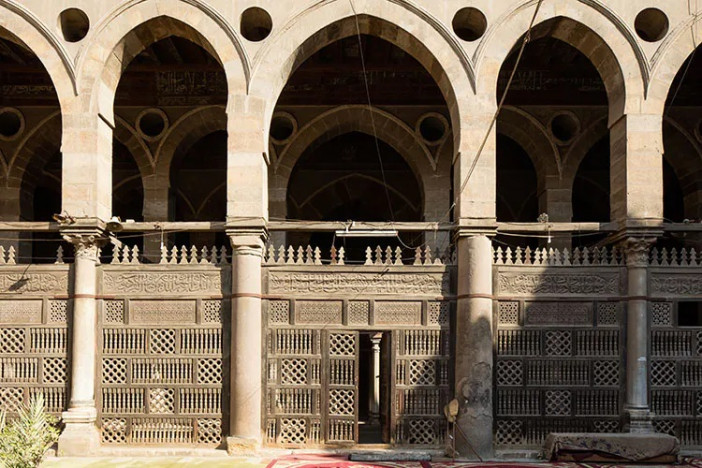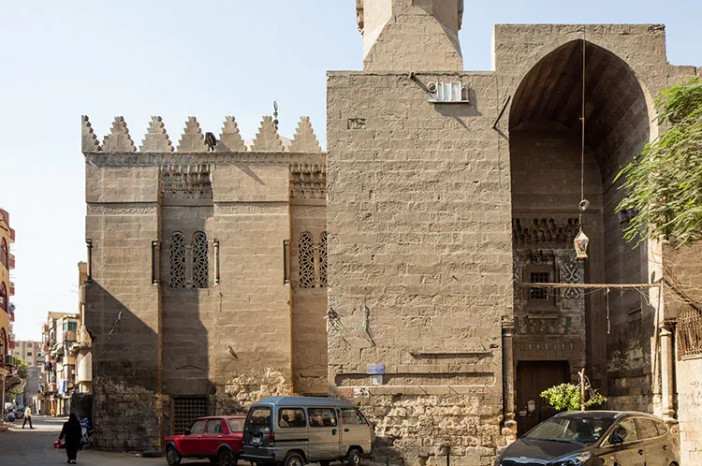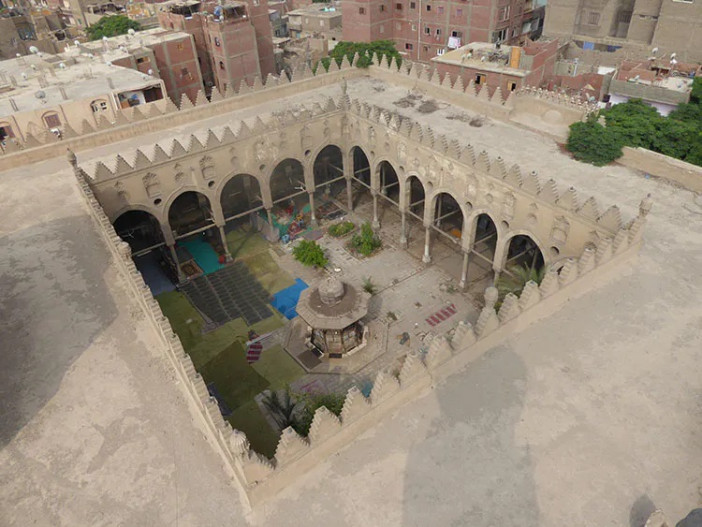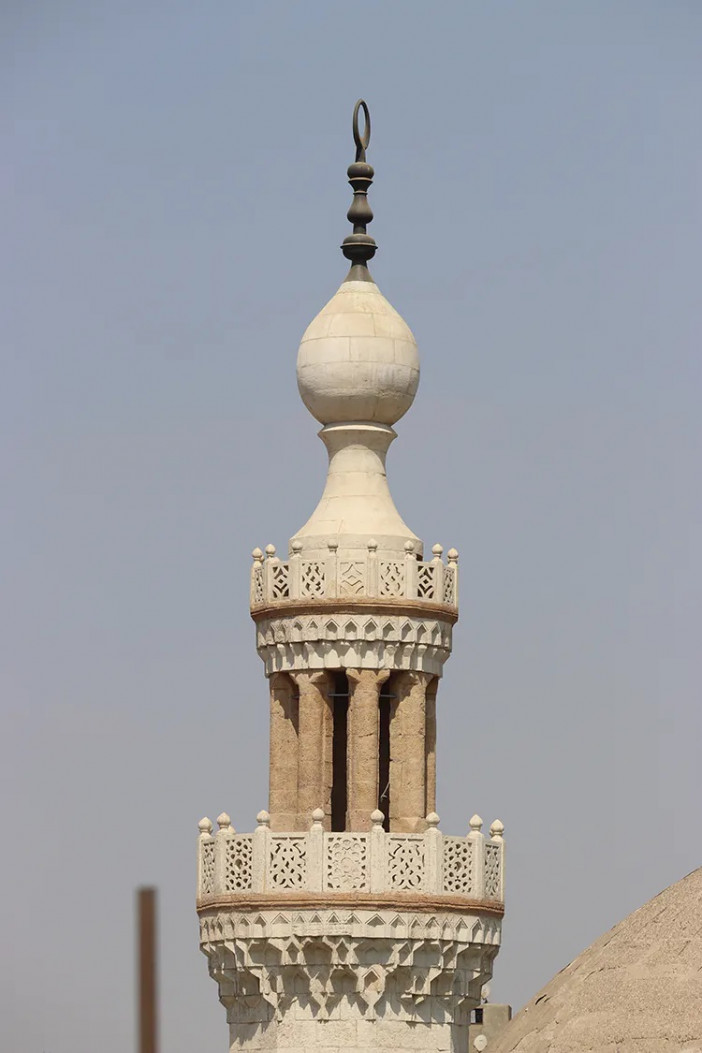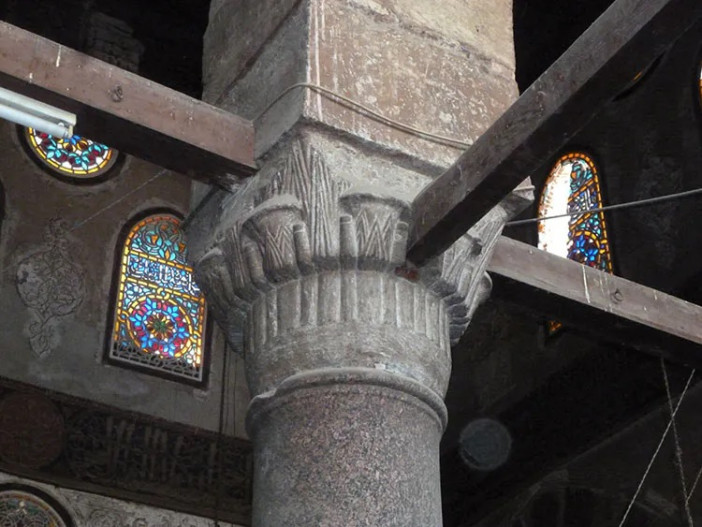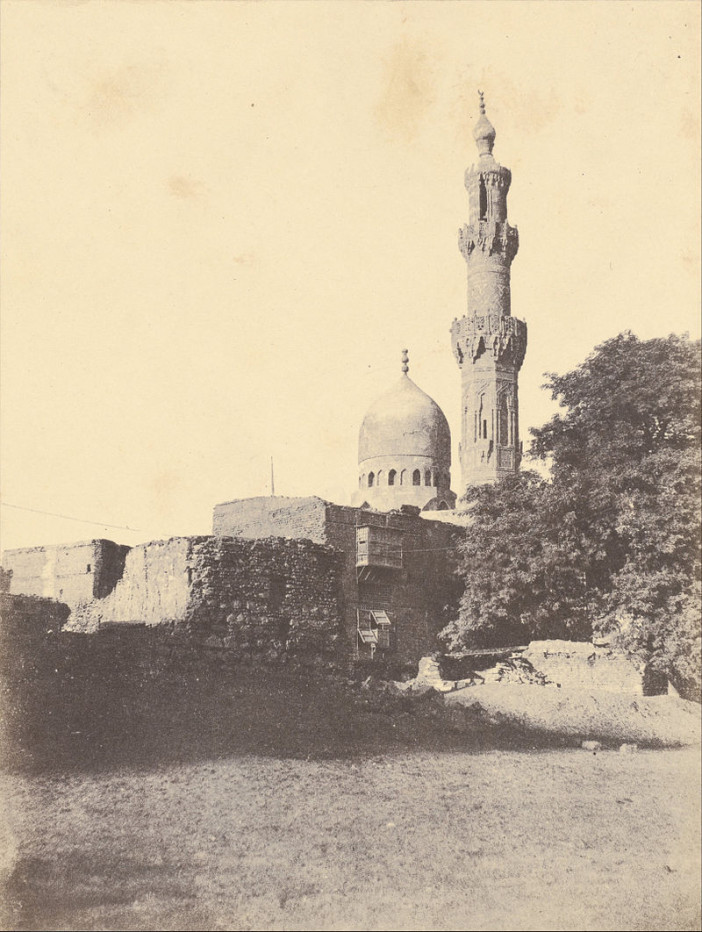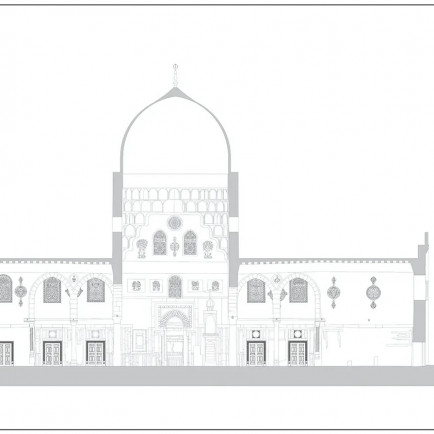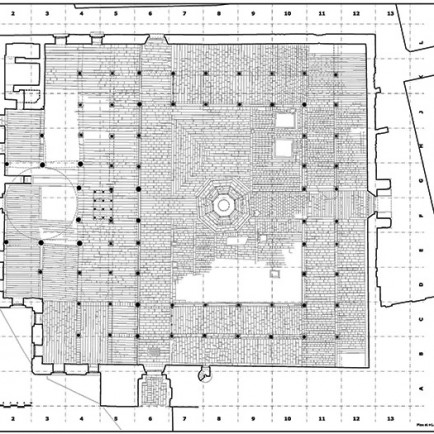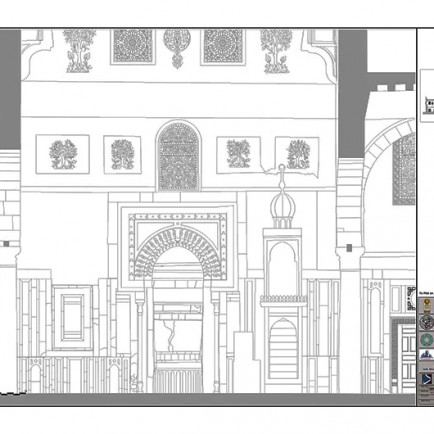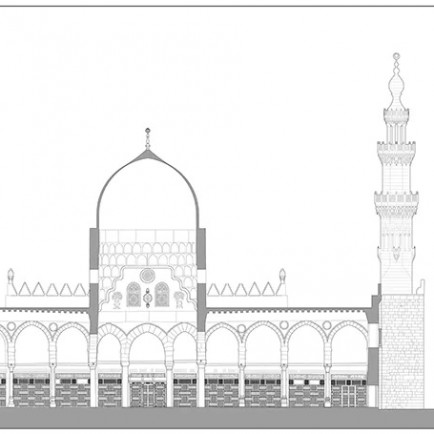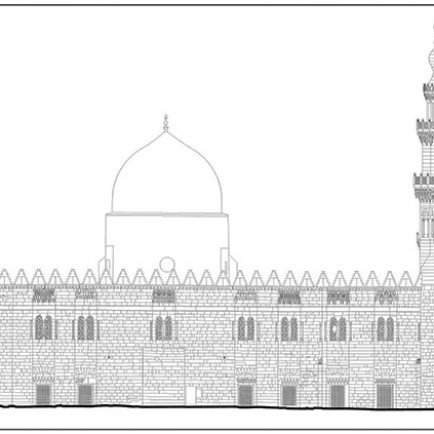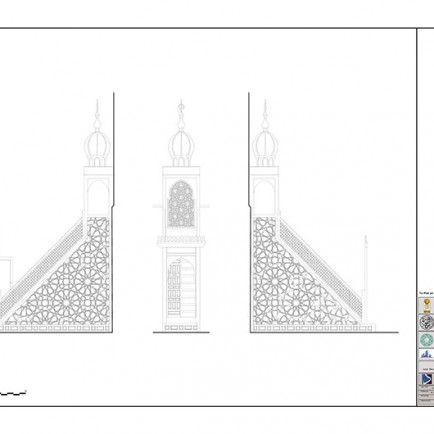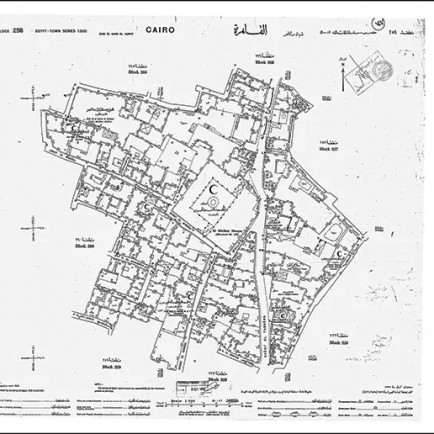Al-Maridani Mosque
History
The mosque from the Mamluk Sultanate of Cairo, Egypt, the Mosque of Amir Altinbugha al-Maridani was built in 1340 CE. It was constructed on the outskirts of medieval Cairo by Amir Altinbugha al-Maridani with major assistance from Sultan al-Nasir Muhammad. It is situated south of Bab Zuweila in the Darb al-Ahmar neighborhood. The mosque's external walls are ornamented in the manner of Mamluk architecture, and its hypostyle design is identical to that of the Mosque of al-Nasir.
It was one of Cairo's most lavishly ornamented mosques when it was first constructed, with the city's first fully octagonal minaret, a sizable dome, and other notable architectural novelties. It was constructed under the sponsorship of his father-in-law, Sultan Muhammad, and with large contributions from al-own Maridani's purse, and as a result, its history and opulence are closely tied to the life and renown of al-Maridani.
Urban and Architectural
Similar to the sultan's mosque in the Citadel, the Mosque of Amir al-Maridani is constructed using hypostyle and riwaq designs and has three axial entrances as well as a dome over the mihrab. But due to the limitations of urban development, the mosque is not square. In particular, the northeastern corner was constructed so that it would not obstruct Tabanna Street or a nearby little road. But it is not as bizarre as several mosques in modern Cairo, such Ulmas' Mosque. Notably, the only indication of when building began comes from the foundation: a band of writing at the mosque's west door shows that construction began in 739/1338-9.
The exterior of the mosque built by Amir al-Maridani is typical of an urban Mamluk mosque, with "recesses capped with stalactites featuring double-arched windows." The main entrance is on the north side of the mosque and is on the same axis as the prayer niche. The mosque has three entrances, each of which is shaped like an iwan with a pointed arch and is crowned with a medallion of faience mosaics. The main entrance is a deep recess with a muqarnas cresting that is lavishly decorated and paneled in marble. The small window enclosed by colonettes and the joggled door lintels are also typical elements of Mamluk architecture. The small exterior window in this instance corresponds to an interior window with a grille made of blue and white tile.
The main entrance's crown, the west entrance, and the sanctuary all display the construction date. A dawn pattern is used to embellish the muqarnas pendentives on the west entrance using the ablaq technique, which alternates light and dark stone courses. A medallion with a smaller medallion in its center is adorned with tile mosaics between the pendentives. The entire south entrance is unadorned.
Description
The Comité de Conservation des Monuments de l'Art Arabe repaired the mosque between 1895 and 1903. But ever since, it has declined gradually as a result of neglect. In addition to the regular buildup of dust and filth from Cairo's desert environment and urban pollution, the mosque has also experienced humidity and water damage because of the area's increasing water table and sewage leaks. The prayer hall, or sanctuary, is particularly dilapidated. The marble panel design on the walls has become especially fragile due to the appearance of cracks in the walls. The wooden insets that make up the decoration of the minbar were stolen between 2007 and 2010.
The mosque was restored by the Comité de Conservation des Monuments de l'Art Arabe between 1895 and 1903. But since then, due to neglect, it has slowly deteriorated. The mosque has endured humidity and water damage as a result of the area's rising water table and sewage leaks, in addition to the regular accumulation of dust and dirt from Cairo's desert environment and urban pollution. The sanctuary, or prayer room, is particularly run-down. Due to the visible fissures in the walls, the marble panel pattern on them has grown particularly brittle. Between 2007 and 2010, thieves stole the wooden insets that make up the ornamentation of the minbar.
References
https://en.wikipedia.org/wiki/Mosque_of_Amir_al-Maridani
https://www.archnet.org/sites/19888
https://earth.google.com/web/search/Mosque+of+Amir+al-Maridani,+Sekat+Al+Werdani,+El-Darb+El-Ahmar,+Egypt/@30.03974721,31.25941378,29.85040169a,73.68437547d,35y,24.99454765h,40.91395042t,-0r/data=CrIBGocBEoABCiUweDE0NTg0MGE2NTBlMDJkM2Y6MHgxNDgwYjc5MjIyZWU0NTllGbp3HiYrCj5AITjuOVVjQj9AKkVNb3NxdWUgb2YgQW1pciBhbC1NYXJpZGFuaSwgU2VrYXQgQWwgV2VyZGFuaSwgRWwtRGFyYiBFbC1BaG1hciwgRWd5cHQYAyABIiYKJAmkVgOUrAw-QBF265KS4As-QBmy3fi7w0M_QCHoasP-EUM_QA
Details
Location
Mosque of Amir al-Maridani, Sekat Al Werdani, El-Darb El-Ahmar, Cairo Governorate, Egypt
Worshippers
1490
Owners
Amir Altinbugha al-Maridani
Year of Build
Constructed in 1339-1340; Restored between 2018-2020
Area
2975
Drawings
Map
History
The mosque from the Mamluk Sultanate of Cairo, Egypt, the Mosque of Amir Altinbugha al-Maridani was built in 1340 CE. It was constructed on the outskirts of medieval Cairo by Amir Altinbugha al-Maridani with major assistance from Sultan al-Nasir Muhammad. It is situated south of Bab Zuweila in the Darb al-Ahmar neighborhood. The mosque's external walls are ornamented in the manner of Mamluk architecture, and its hypostyle design is identical to that of the Mosque of al-Nasir.
It was one of Cairo's most lavishly ornamented mosques when it was first constructed, with the city's first fully octagonal minaret, a sizable dome, and other notable architectural novelties. It was constructed under the sponsorship of his father-in-law, Sultan Muhammad, and with large contributions from al-own Maridani's purse, and as a result, its history and opulence are closely tied to the life and renown of al-Maridani.
Urban and Architectural
Similar to the sultan's mosque in the Citadel, the Mosque of Amir al-Maridani is constructed using hypostyle and riwaq designs and has three axial entrances as well as a dome over the mihrab. But due to the limitations of urban development, the mosque is not square. In particular, the northeastern corner was constructed so that it would not obstruct Tabanna Street or a nearby little road. But it is not as bizarre as several mosques in modern Cairo, such Ulmas' Mosque. Notably, the only indication of when building began comes from the foundation: a band of writing at the mosque's west door shows that construction began in 739/1338-9.
The exterior of the mosque built by Amir al-Maridani is typical of an urban Mamluk mosque, with "recesses capped with stalactites featuring double-arched windows." The main entrance is on the north side of the mosque and is on the same axis as the prayer niche. The mosque has three entrances, each of which is shaped like an iwan with a pointed arch and is crowned with a medallion of faience mosaics. The main entrance is a deep recess with a muqarnas cresting that is lavishly decorated and paneled in marble. The small window enclosed by colonettes and the joggled door lintels are also typical elements of Mamluk architecture. The small exterior window in this instance corresponds to an interior window with a grille made of blue and white tile.
The main entrance's crown, the west entrance, and the sanctuary all display the construction date. A dawn pattern is used to embellish the muqarnas pendentives on the west entrance using the ablaq technique, which alternates light and dark stone courses. A medallion with a smaller medallion in its center is adorned with tile mosaics between the pendentives. The entire south entrance is unadorned.
Description
The Comité de Conservation des Monuments de l'Art Arabe repaired the mosque between 1895 and 1903. But ever since, it has declined gradually as a result of neglect. In addition to the regular buildup of dust and filth from Cairo's desert environment and urban pollution, the mosque has also experienced humidity and water damage because of the area's increasing water table and sewage leaks. The prayer hall, or sanctuary, is particularly dilapidated. The marble panel design on the walls has become especially fragile due to the appearance of cracks in the walls. The wooden insets that make up the decoration of the minbar were stolen between 2007 and 2010.
The mosque was restored by the Comité de Conservation des Monuments de l'Art Arabe between 1895 and 1903. But since then, due to neglect, it has slowly deteriorated. The mosque has endured humidity and water damage as a result of the area's rising water table and sewage leaks, in addition to the regular accumulation of dust and dirt from Cairo's desert environment and urban pollution. The sanctuary, or prayer room, is particularly run-down. Due to the visible fissures in the walls, the marble panel pattern on them has grown particularly brittle. Between 2007 and 2010, thieves stole the wooden insets that make up the ornamentation of the minbar.


